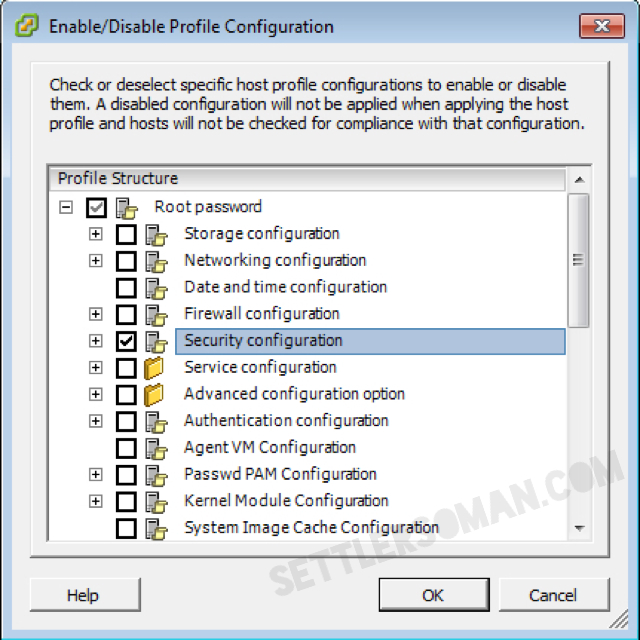The Host Profiles feature creates a profile that encapsulates the host configuration and helps to manage the host configuration, especially in environments where an administrator manages multiple hosts or clusters in vCenter Server. The Host Profile workflow starts with the concept of a reference host; the reference host serves as the template from which the Host Profile is extracted. The designation reference host, and the Host Profile association to that host, persists even after creating the Host Profile.
Just for a quick reminder on the sequence required to create Host Profiles:
- Set up and configure the reference host.
- Create a Host Profile from the reference host.
- Attach other hosts or clusters to the Host Profile.
- Check the compliance to the Host Profile. If all hosts are compliant with the reference host, they arecorrectly configured.
- Apply (remediate).
As I mentioned in my another post a few months ago, the host profile can be used to change/reset forgotten root password on ESXi! Please follow this post to see step by step how to use Host Profiles.
There are two enhancements in Host Profiles available in vSphere 6:
- Maintenance Mode Removal - now it is not always (depending on settings) necessary to place the specified ESX hosts into maintenance mode to apply the Host Profile.
- Reference Host Independence - a ‘Reference Host’ does not have to be available during applying a Host Profile. If a profile is applied without the reference host available, the profile will not be able to validate properly.
Unfortunately, VMware has not changed a required license to be able to use Host Profiles - still Enterprise Plus.
